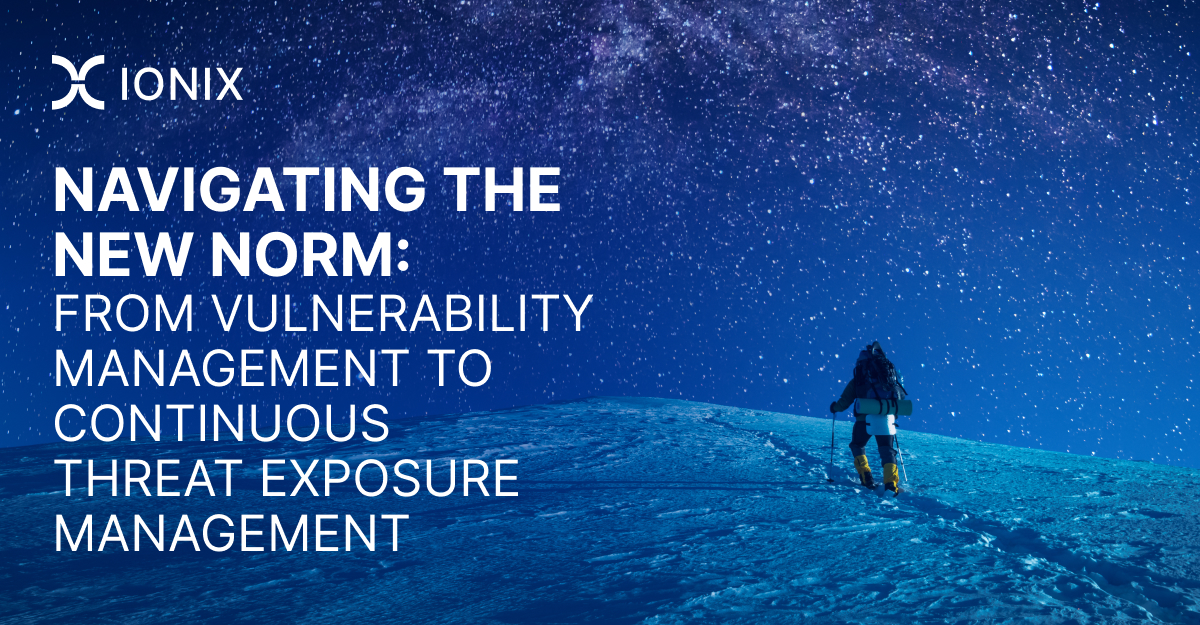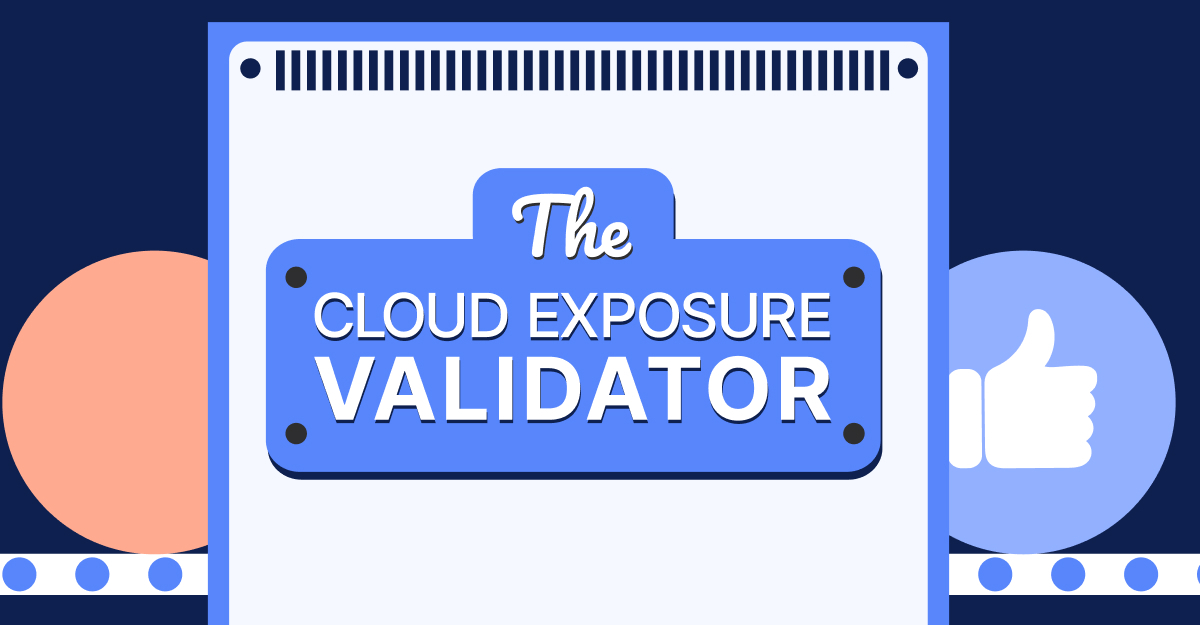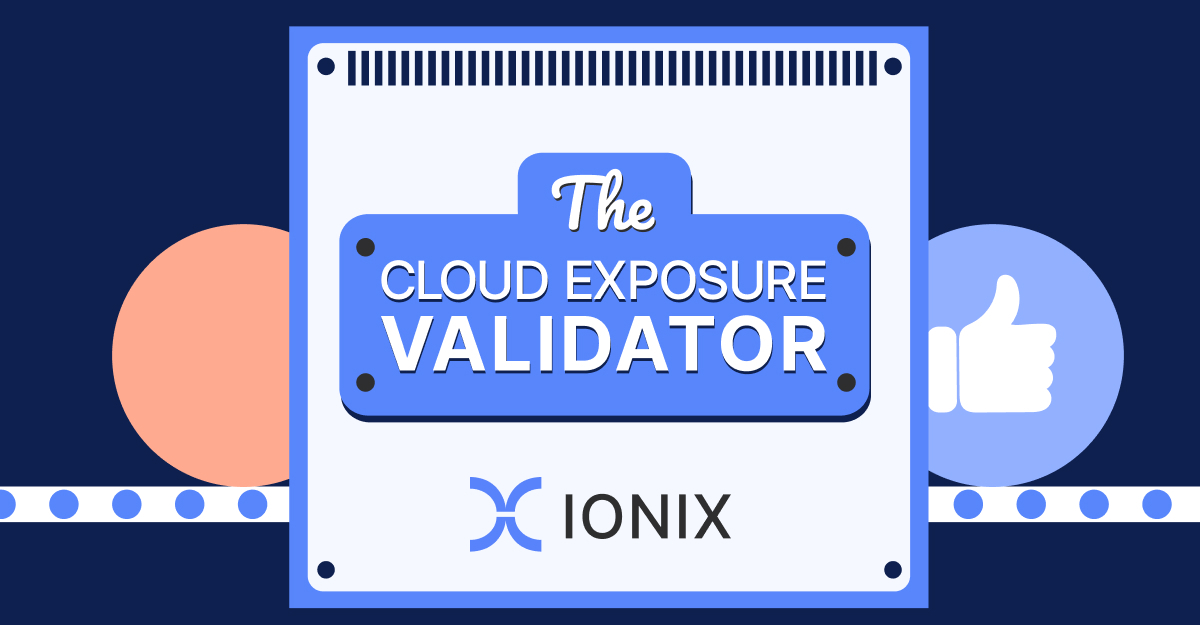Navigating the Shift: From Vulnerability Management to Continuous Threat Exposure Management

In the rapidly evolving cybersecurity landscape, organizations face an ever-increasing barrage of threats. Traditional vulnerability management, while foundational, often falls short in proactively and continuously identifying and mitigating threats. This necessitates a paradigm shift towards Continuous Threat Exposure Management (CTEM), a more dynamic approach that aligns with the complexities of today’s digital environments.
Understanding the dynamics of Threat Exposure Management (TEM) and Vulnerability Management (VM) is the first step toward evolving traditional vulnerability into strategically focused exposure management programs..
In this article
Threat exposure management and vulnerability management
Vulnerability Management (VM), the traditional approach in cybersecurity, has been the cornerstone of many organizations’ defense strategies for years. It revolves around identifying, classifying, remediating, and mitigating vulnerabilities within software and hardware.
As the number of vulnerabilities continues to grow every year and the enterprise attack surfaces expand, organizations find themselves overwhelmed by a perpetual game of catch-up with emerging threats. The traditional VM approach typically relies on severity scores to prioritize risk and doesn’t proactive identify real security gaps before they are exploited.

Data above from NIST
Threat Exposure Management (TEM) is a strategic approach in cybersecurity, focusing on the active identification and prioritization of threats that pose the most significant risk to a business. TEM represents a shift towards a more adaptable, business focused program in addressing cybersecurity challenges. It brings into scope the unique aspects of the organization, including its operational environment and business risks. This adaptability ensures that the TEM program is not only about identifying and mitigating known vulnerabilities but also about proactively managing the evolving threat landscape in a way that aligns with the organization’s specific needs and priorities. TEM is designed as a dynamic, ongoing process that continually expands and improves an organization’s security posture.
“Continuous threat exposure management (CTEM) is a pragmatic and effective systemic approach to continuously refine priorities and walk the tightrope between two modern security realities. Organizations can’t fix everything, nor can they be completely sure what vulnerability remediation they can safely postpone.” Jeremy D’Hoinne, Gartner VP Analyst
The challenges with the vulnerability management
Even with its many benefits, vulnerability management is riddled with challenges. Here are some of them:
Here’s the consolidated list of challenges in Vulnerability Management (VM), incorporating the additional points:
- Over-Reliance on CVSS Scores: The dependency on Common Vulnerability Scoring System (CVSS) scores for vulnerability prioritization can be misleading due to their generic nature and subjective scoring, often failing to reflect the specific context of an organization’s environment and not evolving with the dynamic threat landscape.
- Absence of Business-Specific Asset Intelligence: Effective VM requires an understanding of the organization’s assets and their business importance. Without this, VM practices may not align with the organization’s unique risk tolerance and operational needs, leading to misallocation of resources and potential oversight of critical vulnerabilities.
- Inadequate Coverage of the Evolving Attack Surface: Traditional VM often doesn’t adapt to the continuously expanding and changing attack surface, leading to security vulnerabilities in newly emerging assets.
- Lack of Effective Exploitability Analysis: VM frequently misses out on comprehensive exploitability testing, crucial for assessing the actual risk and impact of identified vulnerabilities in real-world scenarios.
- Extended Time to Patch Due to Stakeholder Involvement: The increased time required for patching, which includes identifying relevant stakeholders and securing their buy-in, adds complexity and delays to the vulnerability management process.
- Rise in Non-patchable Risks: As predicted by Gartner, non-patchable attack surfaces are expected to grow significantly, comprising more than half of an enterprise’s total exposure by 2026, thereby reducing the impact of traditional VM solutions.
Components of threat exposure management
The 5 steps of a Gartner CTEM program:
Based on the detailed information provided, here are concise descriptions of each of the five stages of Gartner’s Continuous Threat Exposure Management (CTEM) cycle:
1. Scoping: This stage involves defining the extent of the attack surface, which goes beyond traditional vulnerability management to include a wide range of assets like devices, apps, social media accounts, and supply chain systems. The focus is on understanding what is crucial for the business and planning to demonstrate value to stakeholders, with an initial scope that can expand over time.
2. Discovery: After scoping, the discovery phase focuses on identifying assets and their risk profiles, including vulnerabilities, misconfigurations, and other weaknesses. This stage is not just about finding a large number of issues but accurately identifying those that pose a real risk based on the business impact.
3. Prioritization: This phase is about identifying and addressing the most critical threats likely to be exploited against the organization. It involves evaluating exposures based on factors like exploit prevalence, available controls, mitigation options, and business criticality, focusing on high-value assets and the likelihood of exploitation.
4. Validation: In this step, organizations validate how potential attackers could exploit identified exposures and how their monitoring and control systems might react. It involves controlled simulation or emulation of attackers’ techniques in production environments, extending beyond technical assessments to include verification of suggested treatments for security efficacy and organizational feasibility.
5. Mobilization: The final stage acknowledges that remediation cannot be fully automated and involves preparing and organizing teams for effective response. It requires clear communication, cross-team collaboration, and involvement of business leaders to operationalize CTEM findings and implement appropriate mitigation strategies, recognizing that automated solutions might not always be sufficient or suitable.
The evolution from VM to TEM to CTEM
The transition from conventional Vulnerability Management to Continuous Threat Exposure Management marks a pivotal shift in cybersecurity strategies, a change propelled by the ever-evolving landscape of cyber threats and the necessity for more proactive and dynamic defense mechanisms.
VM has traditionally been the bedrock of cybersecurity initiatives, concentrating on the identification, categorization, prioritization, and mitigation of system and software vulnerabilities. However, with the National Vulnerability Database recording an overwhelming number of over 200,000 Critical Vulnerabilities and Exposures (CVEs) by the first half of 2023, it’s evident that the traditional VM methodologies are struggling to keep up with the increasing volume and sophistication of threats.
To address the shortcomings of VM, cybersecurity has progressed towards TEM, which we have extensively discussed above. TEM’s goal is to offer an all-encompassing perspective of an organization’s attack surface, factoring in both internal and external threats, and devising strategies to mitigate these risks effectively.
Continuous Threat Exposure Management (CTEM) is the next stage in the evolution of VM programs, necessitated by the continuous and rapid evolution of the enterprise attack surface and global threat environment. It is projected that by 2026, organizations that align their security investments with a continuous exposure management program will be significantly less susceptible to breaches, by as much as three times.
CTEM is not just an evolution but a revolution, presenting a continuous five-step program that aims for enduring and robust cyber resilience. This program encompasses scoping, discovery, prioritization, validation, and mobilization, shifting away from the limited nature of traditional VM and moving towards, a more adaptable and strategic paradigm — a continual process that improves organization’s security posture with the deliberate balancing act of fixing what’s urgent and important and identifying what can safely be postponed. .
How launch CTEM with EASM
Expanding Vulnerability Management (VM) into Threat Exposure Management (TEM) using External Attack Surface Management (EASM) with a focus on the attacker’s perspective in 7 steps:
- Adopt the Attacker’s Point of View: Use EASM to understand and assess your organization’s internet-exposed assets, recognizing that any internet-facing element represents a potential risk. This perspective helps in identifying vulnerabilities that are most likely to be exploited by attackers.
- Continuous Discovery and Adaptation: Implement continuous discovery processes to keep pace with changes in the attack surface. This includes regularly scanning for new, changed, or removed assets to ensure that the security posture is up-to-date with the current state of the external attack surface.
- Include Digital Supply Chain Assessment: Utilize advanced EASM solutions, like IONIX, to extend the scope of TEM beyond your organization’s direct assets to include the digital supply chain. This helps in identifying and mitigating risks posed by third-party partners and suppliers.
- Broaden the Focus Beyond CVEs: Expand the focus of TEM to include not just known vulnerabilities (CVEs) but also misconfigurations and general security posture issues that could be exploited by attackers.
- Prioritize Based on Multiple Factors: Move away from relying solely on CVSS scores for prioritization. Instead, use a combination of factors such as business importance, exploitability, and threat intelligence to prioritize vulnerabilities and exposures.
- Conduct Exploitability Testing: Regularly perform exploitability testing to assess the real-world risk posed by identified vulnerabilities and exposures. This helps in understanding which vulnerabilities are more likely to be exploited and therefore should be prioritized for remediation.
- Implement Automated Mitigation and Remediation Workflows: Develop automated workflows for mitigation and remediation to respond quickly and efficiently to identified risks. Automation helps in reducing the time between the discovery of a vulnerability and its resolution, thereby minimizing the window of opportunity for attackers.
By incorporating these strategies, organizations can effectively expand their VM into a more comprehensive TEM approach, leveraging EASM to gain a deeper understanding of their attack surface from an attacker’s perspective and respond more effectively to emerging threats.
Parting thoughts
As the cybersecurity landscape evolves, transitioning from Vulnerability Management to Continuous Threat Exposure Management (CTEM) becomes crucial for a more strategic and adaptable approach to cyber threats. In this journey, tools like IONIX play a pivotal role.IONIX redefines attack surface management by consistently identifying and addressing critical threats. Its comprehensive asset discovery process, enhanced by machine learning, provides an in-depth understanding of an organization’s digital footprint. With IONIX, responses to threats are not only swift but also informed by real-time threat intelligence. This proactive stance ensures that organizations are not just reacting to threats as they occur but are staying one step ahead, ready to effectively counter any emerging cyber challenges.






